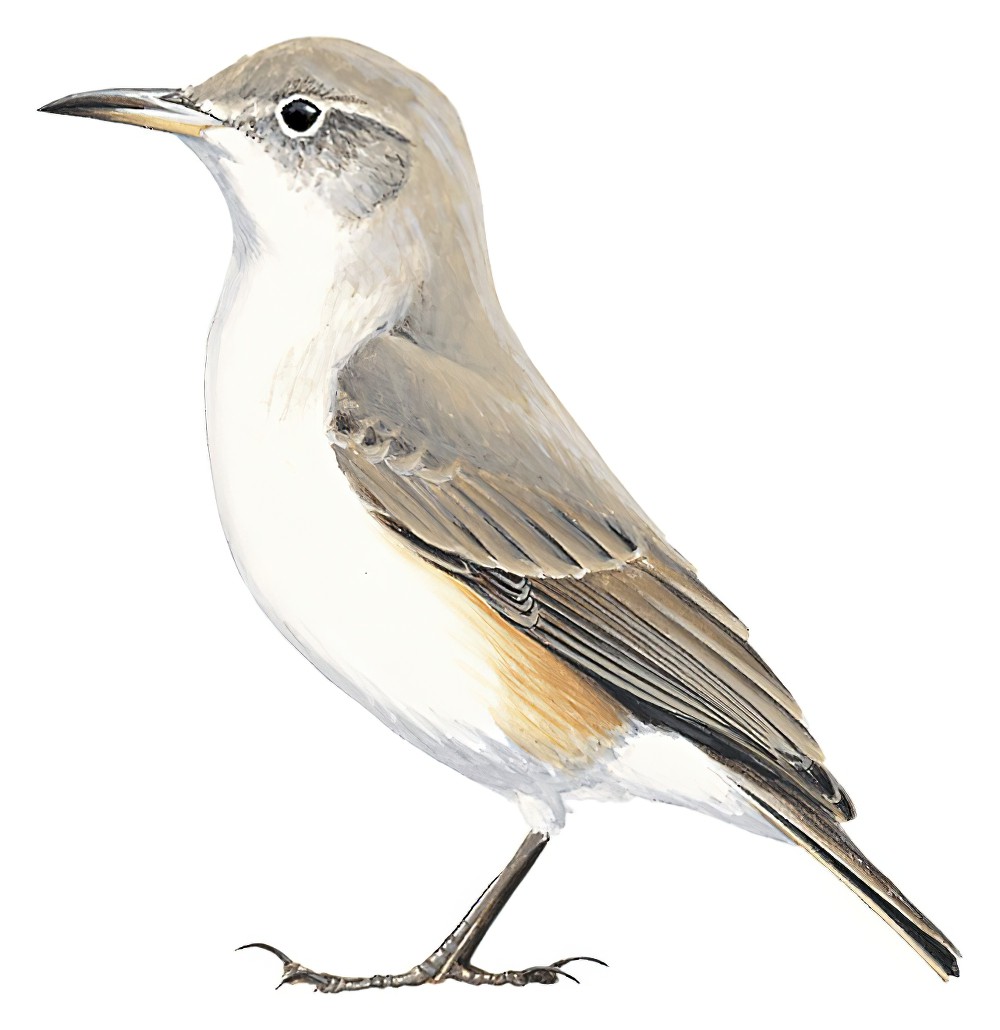Grayish Miner / Geositta maritima

Grayish Miner
SCI Name:
Protonym: Certhilauda maritima Mag.Zool. 7 cl.2 p.72
Taxonomy: Passeriformes / Furnariidae / Geositta
Taxonomy Code: gramin1
Type Locality: Cobija ''Bolivia'' = northern Chile.
Author: d''Orbigny & Lafresnaye
Publish Year: 1837
IUCN Status: Least Concern
DEFINITIONS
GEOSITTA
(Furnariidae; † Common Miner G. cunicularia fissirostris) Gr. γεω- geō- ground-, earth- < γη gē earth; genus Sitta Linnaeus, 1758, nuthatch; the terrestrial Common Miner was classified with the nuthatches, subfamily Sittinae, by Swainson 1837, because of its straight bill, short tail, and long hind-toe with a curved, lengthened claw; "GEOSITTA, Sw. (fig. 283.) Bill longer than the head, trigonal at the base, cylindrical beyond. Culmen rounded. The tip of the upper mandible entire, broader than high, and slightly bent over the lower. Wings long, pointed; the first quill nearly equal to the second and third, which are longest; tertials lengthened. Tail slightly forked. Feet slender. Anterior toes rather short; the lateral ones unequal, the claws small; hind toe as long as the middle toe, but shorter than the tarsus; the claw much lengthened, and slightly curved. Chili. G. anthoïdes. Part 5. No. 129." (Swainson 1837 (Classif. Birds)); "129. GEOSITTA anthoïdes. ... Inhabits Chili." (Swainson 1837 (Anim. Menag.)); "Geositta SWAINSON, Classif. Birds, 2, p. 317, 1837— generic characters only; type by subs. desig. (SWAINSON, Anim. Menag., p. 323, Dec. 1837) Geositta anthoides SWAINSON = Alauda fissirostris KITTLITZ." (Hellmayr, 1925, Cat. Birds Americas, Pt. IV, 2); "Geositta Swainson, Classif. Bds., 2, 1837, p. 317, fig. 283. Type, by monotypy, Geositta anthoides, Part 5, No. 129 = Alauda fissirostris Kittlitz." (Peters, 1951, VII, p. 58). Fjeldså, Christidis & Ericson (eds.) 2020, treat this genus, together with Sclerurus, in the family Scleruridae.
Var. Geocitta.
Synon. Geobamon, Geobates.
maritima / maritimus
L. maritimus maritime, of the sea < mare, maris sea.
● "Of this bird I can find no description. It inhabits the low, rush-covered islands along our Atlantic coast, where I first found it" (A. Wilson 1811) (Ammodramus).
UPPERCASE: current genus
Uppercase first letter: generic synonym
● and ● See: generic homonyms
lowercase: species and subspecies
●: early names, variants, mispellings
‡: extinct
†: type species
Gr.: ancient Greek
L.: Latin
<: derived from
syn: synonym of
/: separates historical and modern geographic names
ex: based on
TL: type locality
OD: original diagnosis (genus) or original description (species)












